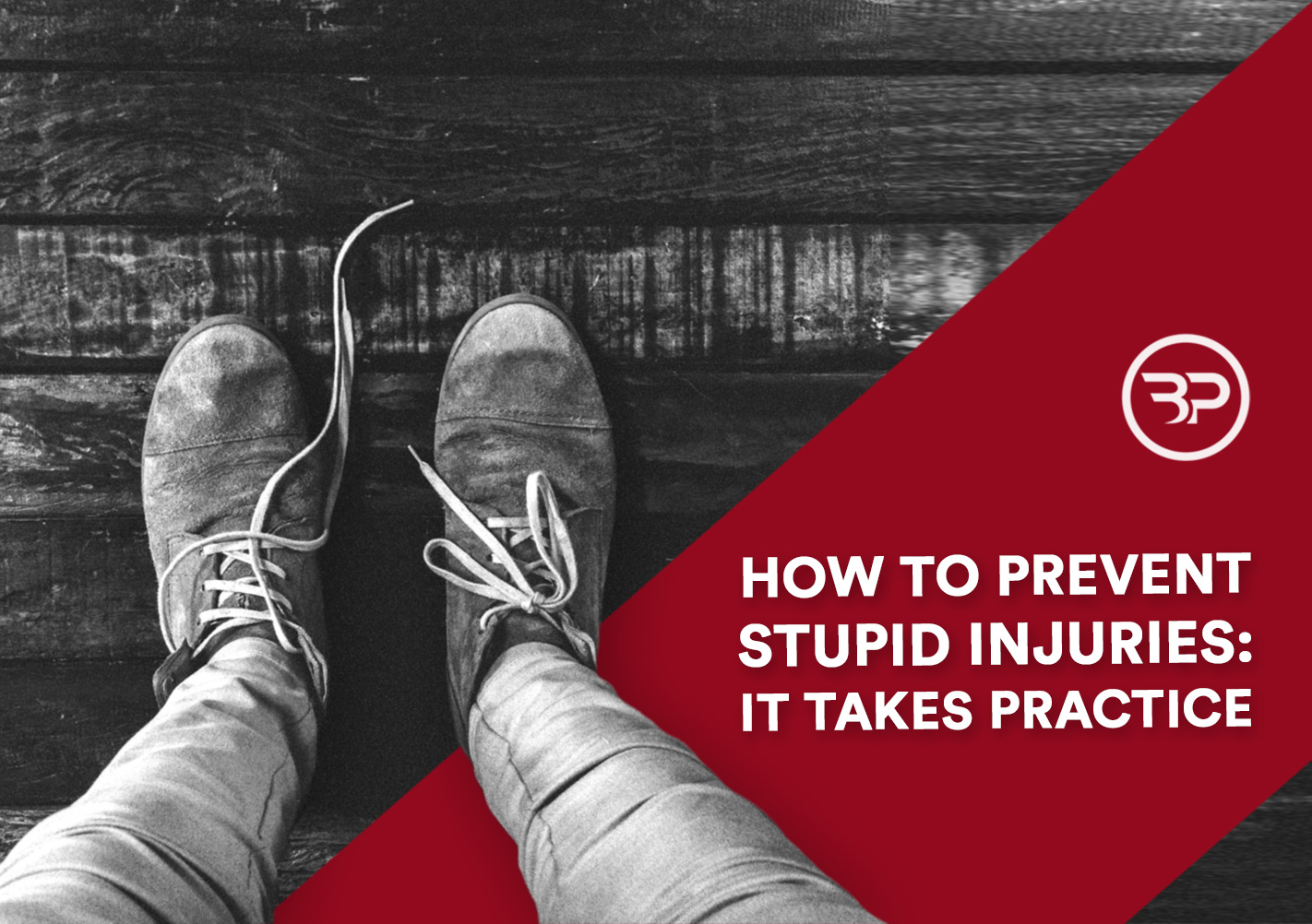How to Prevent Stupid Injuries: It Takes Practice
November 19, 2015
Guest Post by Robbie Farlow
The pain shot through my body like a rocket on the Fourth of July.
Like the delay before the rocket explodes, I felt no pain at first. The pain only surged through my system once I saw the blood, the dirt, sweat, and then of course the tears mixing together.
Yet again, the ground had jumped up to meet me. Or, had I fallen off again?
I quickly replayed in my head the moments that led to this.
Everything was going right. I was balanced, moving towards my goal.
The machine I was on had been working just like it was designed.
So how, no why, had this happened again?
Dazed and confused, the pain slowly bringing back to reality, I heard his voice.
My mental fog began to clear and I felt pain rising throughout my tormented eight year old body.
As if ignited by the hot summer sun, this emotion was beginning to boil my blood, which was now oozing out of a cut on my left elbow.
I looked up to see his face as he repeated those words again; those infamous words spoken by my father as I attempted to learn to ride a bike:
“It takes practice.”
At eight years old, this was the most infuriating phrase my Dad could have said. My knees were covered in dirt. I was gushing blood like a scene from a Tarantino film. Aand he had the audacity to talk about “practice.”
Then, he hit me with the next phrase.
“Practice makes perfect.”
When it came to sports, no kid likes practice. The scrimmaging at the end of practice? We all loved it. But the actual drills, running of plays, laps around the gym or field? Not what we wanted to do.
I was too busy trying to beat Super Mario as a kid to even attempt practicing those drills outside of practice.
Yes, sometimes drills suck. But they give you the chance to hone in on better technique.
“Get the fundamentals down and the level of everything you do will rise.” – Michael Jordan
I wanted to be like Mike but I didn’t want to practice like Mike. Similarly, how often do your actions align with your goals?
Practice makes you more proficient.
The more proficient you are in movement, the more automatic it becomes. The more automatic weight room movements become, the more they help you improve your performance in and out of the gym.
Weight lifting patterns are in everyday tasks
Movements in the weight room are about more than just looking good. They’re foundation movement skills to unleash your inner athlete and prevent injury.
Let’s say getting deeper in your squat is a personal goal. In a 24 hour period, there are a plethora of opportunities where you can practice deep squatting with sound technique using just your bodyweight.
Reinforcing the squat
Example: Picking Junior, in the midst of a temper tantrum.
I am not a parent, but I am certain that squatting with good form isn’t a priority when Junior comes screaming. How many friends do you have that have thrown out their back picking up their kid?
Extending the hips, using good posture, and lifting with your legs while you prevent flexing through your core are all movement patterns we use daily.
The carryover from our training is real.
Consciously practicing and reinforcing your movement patterns will prevent stupid injuries.
Now, that doesn’t mean you need to bust out three sets of ten while tending to your child’s needs or while getting coffee in the office break room. But if you need to put something in a low cabinet or pick up your crying child, why not get a few good “practice” reps in?
Reinforcing the deadlift
We all know the deadlift is huge for giving you epic #gainz and building a body of twisted steel and sex appeal.
But, lost in the sexiness of PR’s and heavy barbells is the huge takeaway from building a deadlift:
The ability to generate internal pressure, hold a mostly neutral position, and maintain total body tension while moving heavy stuff.
Example: You’re helping your boy Jonny move a couch out of his old apartment.
Notice how lifting (anything and everything- underline) resembles a proper deadlift set-up?
- Neutral Spine: Check
- Hips back: Check
- Drive your legs to push through the floor: Check
Whenever lifting heavy, you have the chance to reinforce the real-world carryover from your weight room lifting. This teaches your body to automatically hold better positions to prevent injury from a variety of positions.
The more I coach and the more I work with a wide array of clients, the more I realize that developing explosive athletic power is important for everyone, not just sports stars.
Reinforcing hip extension
In nearly every sport, explosively extending the hip, pushing off with one leg at a time, is vitally important to success.
So how can we improve this skill outside the gym? Climbing the stairs.
To practice this explosive power on stairs, focus on driving the heel into the foot into the ground with power during each step.
Eric Bach here interrupting to add:
Developing explosiveness in about “intent,” meaning maximum effort on a movement regardless of resistance. Developing explosivesness take a brief pause before you ascend to the next step and focus on driving through the heel of your raised foot and extending the hips with force.
Training patterns and improving ADL’s
Activities of daily living (adl’s) are the activities we perform every day. The carryover from lifting to these tasks is immense:
Shoe come untied? Square your hips and do a reverse lunge to tie your shoe.
Standing up from the porcelain thrown (Toilet, bro)? Boom, powerful hip and knee extension in a squat pattern. No one’s watching. Really.
Putting your gains into practice
While these ADL’s seem much different from training, what’s the point in hoisting all that weight if you’re not improving your daily functional capacity?
Ripping heavy barbells off the floor is important. But your training is only maximized when applied to all areas of life.
“I fear not the man who has practiced 10,000 kicks once, but I fear the man who has practiced one kick 10,000 times.” – Bruce Lee
As annoying as hearing “practice makes perfect” was as a kid, now I realize their truth. It is not about being perfect, it’s about being proficient. You may not be squatting or deadlifting daily, but these movement patterns are part of every day. Reinforce the fundamentals inside and outside the gym to truly maximize your training.
And remember: it takes practice.
ABOUT THE AUTHOR
I was the socially awkward ginger kid who growing up loved Hulk Hogan, Captain America, Michael Jordan, and video games. I was Screech until I found weightlifting and bodybuilding; then I turned myself into AC Slater. Now I take my love of all things nerd and help my clients discover their inner hero as an online coach at Side Quest Fitness. I also host the fitness podcast, Side Quest Podcast, and live by one simple motto: Scotch and Squats and Ben and Jerry’s.












[…] Preventing Stupid Injuries: It Takes Practice — Robbie Farlow, Bach Performance […]
[…] Preventing Stupid Injuries: It Takes Practice via Robbie Farlow, Eric Bach […]